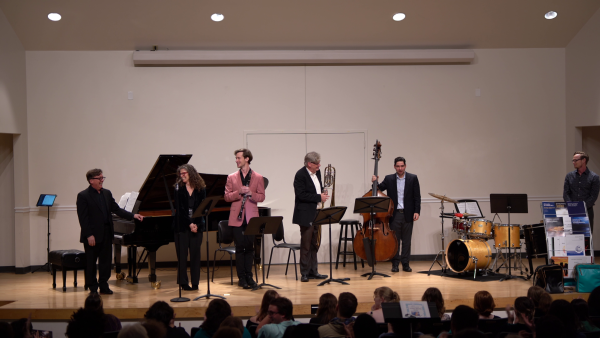Evolution of Paramore
I know there are some huge Paramore fans out there who were excited about their new album, “This Is Why,” and I heard there were some stylistic changes for the angsty band to stay relevant. So, I think it would be interesting to look at how Paramore changed with which songs were most popular and how what the fanbase wanted might’ve changed along with them.
Looking at one of Paramore’s most popular songs at No. 10 on the Billboard charts “Ain’t It Fun,” the song annoyed me when it first came out. I never cared for it, but I did like how this song used a gospel choir in it to emphasize the chorus towards the end, as well as the music video. The song has a focus on how hard some people get hit with reality after going out on their own.
From their newest album “This Is Why,” the most popular and self-titled song has an energetic chorus and focuses on how lead vocalist Hayley Williams deals with what seems to be a stalker or the paparazzi. This is the first song the band released after a long hiatus, so fans were pleased with the catchy chorus and soft sung verses. This song has shown some of William’s vocal skills.
Looking back at 2007 at the release of “Misery Business,” this is one I’m a fan of
and it is much different from their later songs. This song is one of those catchy, angsty, teen songs and had the iconic tone of the late 2000s keeping it on Billboard’s Hot 100 for 30 weeks, the longest a Paramore song has stayed on the charts.
Another popular one off the new album is “Running Out Of Time” which seems more pop to me than some of the early Paramore stuff I’ve listened to. It is a straightforward song about how there is not enough time in a day to do everything and in such a busy and fast-paced world. However, in terms of songs named “Running Out of Time,” I think Tyler, The Creator’s song, “RUNNING OUT OF TIME” is better than this one. It captures the same concept while making a love story out of it.
Another number off the new album “C’est Comme Ça” switches to what reminded me of a couple of late ‘90s early 2000s songs I’ve heard, and I really like the sound of this one. The title translates to “it’s like that” or “like this, like that,” a phrase used the same as how we use “it is what it is.” The saying is an acceptance of something that is kind of a bummer or annoyance that is too late to change since it already happened.
Lastly, let’s look at “The Only Exception” from Paramore’s 2009 album titled “Brand New Eyes.” This is a slower song and more of a ballad that really homes in on the feeling of love. There’s more acoustic you can hear in this one since it is not a more upbeat and positive song. It peaked at No. 24 on Billboard, and I remember many people knowing this song word for word because of how it resonated with them.
In the end, fans can see Paramore’s growth from the angsty teen phase into the more welcoming of the real world and how there are new problems that people encounter “era.” It also shows that the music grew up with fans too as there are not nearly as many songs that are from the old emo era of 2000s cheesy rock. Paramore has a decent gap between albums, and their hit songs show how music changes to fit what’s popular.
















